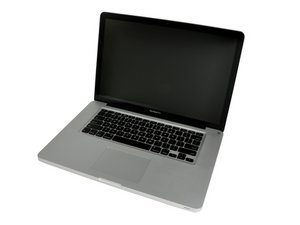Ah! Dual drive configs are a bit tricky!
Frankly, What made sense years ago makes little sense today! Let me explain …
Back in early 2012 SSD’s were still very expensive and traditional HDD’s where limited to 512/750GB in size and larger 1 TB drives tended to be fragile. So if you needed deep storage you would put in two 750GB HDD’s. But these large drives where still very slow! Spinning iron alone was not fast! SSD’s where faster! But still very expensive. People who wanted a faster setup would take the optical drive out and put in a SATA II (3.0 Gb/s) 128GB SSD making it the boot drive holding the OS and the bare minimum of Apps leaving 1/3 of the drive unused so the OS and Apps have the needed free space (elbow room).
The HDD vendors saw this move and many people didn’t want to loose their optical drives (or may not even have one) WD first gen of hybrid drive was a true dual drive setup sharing the one SATA bay’s port sandwiching a small SSD onto the drive. This really was not very good. Seagate intro’ed a caching SSD design basically the SSD was not directly accessible the HDD’s drive controller would take note what blacks where the most active and place a copy onto the SSD. So every time that block was needed it would grab it from the SSD instead of the HDD. Any updates would go to the HDD block and the SSD block would be updated. WD also finally went this way but their implementation was not as good and late to the market.
Apple took note of this and finally created an OS level cache design called Fusion Drive. Unlike the SSHD hybrid drives which only used one SATA bay, Apple used two physical drives. Apple’s design also migrated from a dual SATA setup to a PCIe/AHCI and then to a PCIe/NVMe and as it was at the OS level Vs the drive controller it also offered file level caching Vs block. It still followed the same basic idea of using the SSD as a cache drive always reading it for a saved block or run of blocks and always writing to the HDD and then updating the SSD.
But things changed! SSD costs have dropped! SSD’s are now larger than HDD in smaller packages! Apple realized this was the direction and to be one step better worked hard on embedded flash storage instead of a discreet drive with its own controller. We saw that with the intro of the iMac Pro and then the Mac Pro using raw flash units which is then managed within a custom MUX controller chip. That allowed Apple to create a RAID style SSD design light years ahead of others!
But I’ve gone to far with the back history of storage… Whats important here is understanding where we are today.
Let’s get back to your question:
While you can install second drive in your system running a dual drive setup Wie man eine zweite Festplatte im MacBook Pro (15 Zoll, Ende 2011, Unibody) installiert. I would recommend you install a SSD in the optical drive and leave your HDD (spinning drive) in the HD bay. The reason is the optical bay does not have crash guard protection unlike the HD bay so banging system the drive could get damaged. While one can create a Fusion Drive config using a smaller SSD in the optical drive to improve the HDD’s performance. Apples original drive was only a SATA II (3.0 Gb/s) and the original SATA cable was also not rated to run at SATA III (6.0 Gb/s) data rate. You’ll need to upgrade the cable MacBook Pro 15" Unibody (Mid 2012) Hard Drive Cable following this guide MacBook Pro (15 Zoll, Ende 2011, Unibody) Festplattenkabel/Infrarotsensorkabel austauschen and yes I did point to the 2012 cable as its the better cable and you want to also follow this Your Hard Drive Cable Is A Ticking Time Bomb
To add to this the Optical bay has a messed up SATA port within the logic board design that will not boot up under SATA III (6.0 Gb/s) So you need a fixed speed SATA II SSD if you want it to be your boot drive. You are then limited to SATA II data rate for that drive.
It all boils down to a bit of a mess! I would forgo the dual drive setup and just go with a single SATA III SSD in the HD bay which offers your primary storage and if you really need more storage then use the optical bay with a SSD. Forget the HDD (spinning disks)!
To help put this into perspective Samsung just released its new 2.5” 870 EVO SSD Samsung’s new 870 Evo SSD brings faster speeds, lower prices a 4TB drive just a few years ago was over $1,000 today its $530 USD!! And a 1TB is $140. So why are we going with a dual drive any more?
War diese Antwort hilfreich?
Bewertet
Rückgängig machen
Bewertung
0
Abbrechen
Schau durch den Thread, bis du den richtigen Platz für diesen Kommentar gefunden hast. Klicke dann auf "Den Kommentar diesem Post zuordnen", um ihn zu verschieben.

 2
2 
 329
329  971
971 

